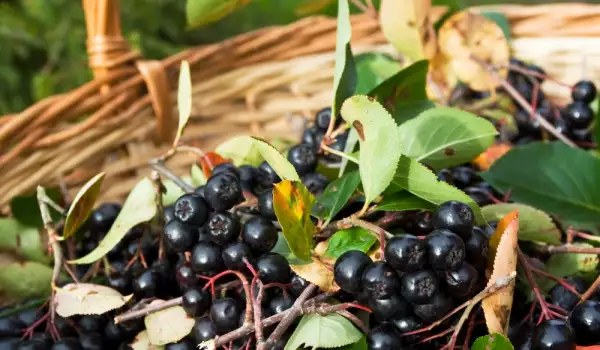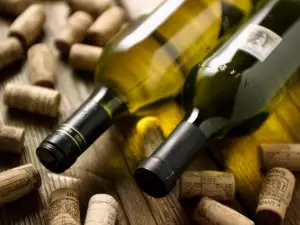Aronia is known for its many health benefits. It contains a number of B vitamins, ascorbic acid (vit. C), basic elements such as iron, copper, manganese, etc. Contains all types of sugars and pectin.
Thanks to all this the benefits of aronia are not few, but not everyone likes it in its natural form, that is, straight from the branch, because it has a lot of astringency and viscosity. In addition, it produces abundant fruit and is good to store for the winter without losing its valuable qualities. One such method is homemade aronia wine.
Aronia wine is delicious and aromatic, made by your own hands. In addition, the dark ruby drink supports good health. A number of unique properties pass from the fruit to the wine, turning it into a medicine for high cholesterol, low immunity, blood pressure spikes, fragility or laxity of blood vessel walls.
There is only one con. For aronia wine to be useful, it should be drunk extremely moderately - one tablespoon 30 minutes before meals (daily) or no more than 75-100 ml per day.
Making aronia wine is not difficult. The steps are basically identical to making any other homemade wine: fruit picking, preparation, crushing, fermentation, filtering and aging. But there are a number of subtleties and nuances, without which, instead of a real taste, you can get a drink with a dubious taste, color and most importantly, benefits.
How to make good aronia wine? There are as many aronia wine recipes as there are recipes for any other wine from any other fruit. But the stages of its preparation are repeated in practically every recipe. That is why we will look at the technology of making black aronia wine based on a classic recipe.

Components:
- 10 kilograms of aronia fruit;
- 2 kilograms of granulated sugar (or 1 cup per 1 kilogram of fruit);
- 100 grams of unwashed raisins;
- 2 liters of boiled and cooled water.
Technology and nuances
First, select vessels for winemaking at all stages. They must be either enameled (without damage) or glass.
On a dry and preferably sunny day, collect the fruits of already well-ripened aronia. Weigh them and without washing them, knead the necessary amount with hands or a wooden press. The resulting puree is placed in a container with a capacity of at least 10 liters. Add sugar (1 kg) to the mass and add a handful of unwashed raisins. Mix again, cover and place in a warm place for 7 days. The optimal temperature will be 19-24°C.
At the same time, do not forget about the detail - you need to stir the mixture daily, so that it does not form mold. After a week, the aronia syrup and pulp will finally separate from each other and foam will appear on the surface.
First, you will work with the pulp: it must be collected and squeezed through cheesecloth (or a press). But do not throw away the remaining pulp, it will still be needed.
Then work with the juice: filter through cheesecloth everything that has resulted and pour it into a container where the wine will ferment. On this container you install a water seal on top or put on a simple rubber glove bought from a pharmacy.

At the same time, pour the remaining fruit pulp with lukewarm water and add the second half of sugar, mix everything very carefully. Cover and leave for another 7 days in the same warm place without access to light, not forgetting to stir daily.
After 7 days, filter the second portion, filled with water and already swollen, without squeezing - the pulp has already given everything valuable to the water. Now you need to pour the resulting liquid into the container where the fermentation process is already underway. To do this, you need to remove the glove, pour out the liquid, put on a glove.
All the painstaking work consists in the fact that, after mixing the liquids, the future wine must be filtered every two days, draining it through a thin rubber hose (like from a dropper) into a clean container and putting on a glove again. Repeat this process until fermentation has stopped and the wine is completely sediment-free.
When you get a clean and ready drink, it should be bottled, sealed and left to age for 2-4 months in a cool and dark place. The resulting homemade aronia wine will surprise you with a pleasant taste and a luxurious bouquet of aromas, will give you health and will undoubtedly fill the collection of any wine lover. Its alcohol content is usually around 12%. You can keep it for up to 5 years.
The preparation of aronia wine can be done faster, but one cannot talk about the benefits of such a drink. Real healthy wine takes time, patience and diligence.




















Comments